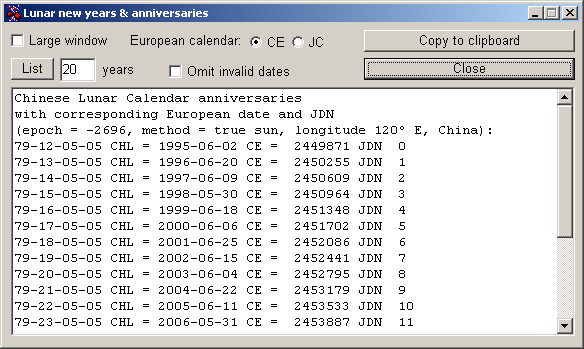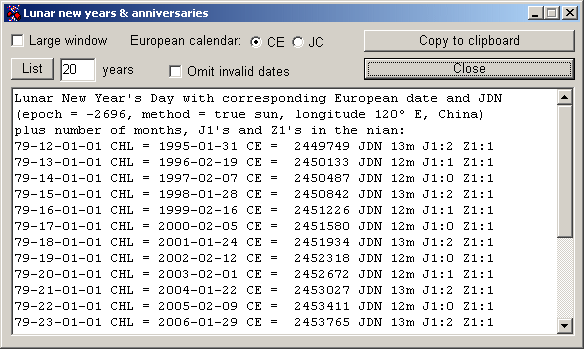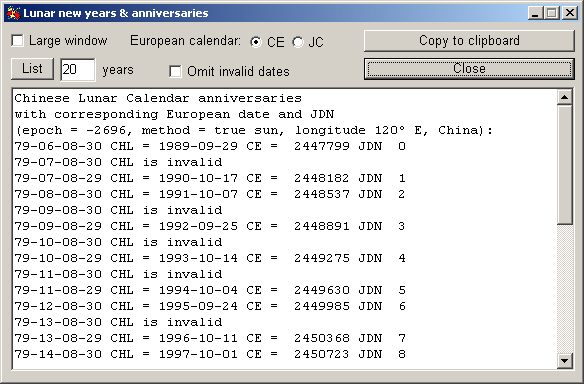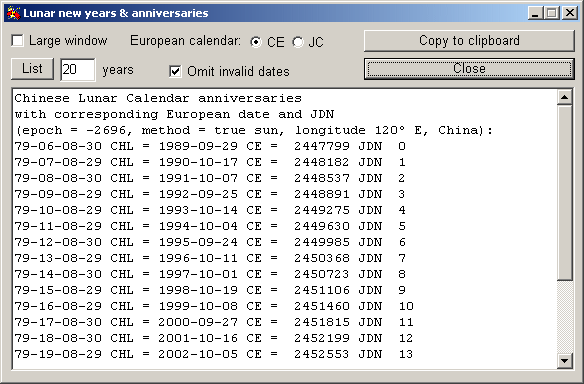|
Clicking on the 'List lunar new years & anniversaries' button brings up a window with a list of Chinese lunar dates (with corresponding Western dates) with the same month number and day number as the date currently displayed, for 20 years from the year currently displayed. For example, if 79-12-05-05 CHL = 1995-06-02 CE is displayed then we obtain:


A larger range of years (several hundred) can be obtained by changing the value in the 'years' box and clicking on 'List'.
European dates can be displayed either in the Common Era Calendar (CE) or in the Julian Calendar (JC). After changing, click on 'List' to relist.
If we select the Japanese lunar calendar we find, in the list of new years days, a difference from the Chinese Calendar:

New Years Day in the Chinese Lunar Calendar always occurs between January 20th and February 21st inclusive. Occurrences on either of these extreme dates are very rare (about 1 in 1000). New Years Day occurred on February 21st in 1108 CE and will occur next in 2319 CE. It occurred on January 20th in 30 CE, 49 CE and 497 CE, and probably in 421 CE and 869 CE ("probably" because of uncertainty concerning the value of Delta T prior to 1000 CE).
If the Chinese lunar date displayed is a leap month or if the day is the 30th day of the month then simply adding or subtracting 1 from the cycle-position numbers may not produce a valid date. E.g., 79-06-08-30 CHL is a valid date, but 79-07-08-30 CHL is not. In this case clicking on 'List lunar new years & Chinese anniversaries' produces:

If 'Omit invalid dates' is checked then relisting gives:

| Next: List lunar month starts and leap months | |
| Contents | Hermetic Systems Home Page |